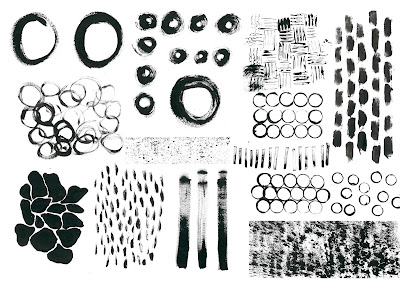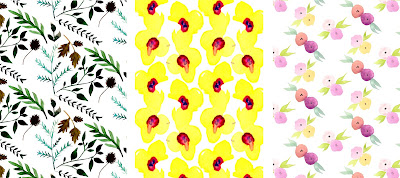10th November 2016
After a few exchanged emails about ideas for a print
workshop I plan to undertake whilst at my Placement, today I met Becky Mayall,
the textiles teacher whom I will be working with. I also met the Year 10
textiles class I will be working with by observing a presentation being shown
to the class by a lady who works for Ikea. I noticed the students lost
concentration as the woman spoke to them at the front of the class. She didn’t
use her PowerPoint to guide her presentation which resulted in a few stop/start
moments. This made me consider some of the ways in which I could engage the
students when I do my presentation/lesson.
After the Ikea presentation had
finished, myself and Becky had some time to talk about our plans for my print
workshop. We talked about what I had learnt from the presentation I had just
witnessed and spoke about the little overlooked things such as knowing when the
right time is to pass round my samples which is key for a successful
presentation. I also spoke about how I wanted my presentation to be a little
less overwhelming and more of a conversational Q&A session followed by a
print workshop. I suggested we put tables together to make a bigger table in
order to all sit round where I can show my own work and samples easily as well
as allowing me to come across as a less authoritative figure where students
could feel comfortable in asking me questions. We also spoke about a PowerPoint
presentation flowing in the background to keep me on track which Becky agreed
to take control of whilst I would be sat round the table myself.
Next time I see Becky I will have a PowerPoint presentation of my learning
experiences on my course at university, and the journey from drawings to
prints; something Becky feels the students need to see in order to boost their
motivation as they seem to be getting bored with drawing in their project. I
will also research into some ideas for the GCSE project the students are
undertaking, ‘Natural Forms’ theme as the inspiration for my Print Workshop as
well as a lesson plan to familiarise Becky with my ideas. This way I can easily
receive feedback from her if there is anything she would like me to do
differently.
24th November 2016
After showing Becky my Textiles print work today, we agreed
to not use the Power Point Presentation as I am more set on the idea of a more
conversational lesson, where I can sit round a table with the students going
through the work I have produced. A Power point running in the background runs
the risk of students losing concentration on what I’m saying and passing round.
This will also hopefully create a more relaxed atmosphere and encourage the
students to speak honestly about going to college and their thoughts on
University.
Today I also brought in my work for Becky to see as well as the
project I am working on at the moment which involved the paper prints using an
easy printing technique and paper fans. As this idea is a cheap, easy and a fun
way to print as well as the fact it can be easily integrated into their ‘Natural
Forms’ project, we agreed this is the technique I will use for my Print
workshop next week.
30th November 2016
After observing and helping the class for four week today
was my own constructed lesson. My workshop was really successful in the way
that the students gained inspiration from my work as well as learnt a new
technique which they can now develop on. The idea to have a more conversational
lesson was the right choice and it worked really well as the students were
interested and got involved with asking me questions about themes, concepts and
university as a whole. This half of the lesson flowed really nicely and I
enjoyed speaking to the students and hearing their ideas, questions, concerns
and worries to which I hopefully helped and advised correctly.
The second half of my lesson was a bit more hectic as there was limited space
and therefore a bit more time than planned was spent on creating more spaces
for the students to work. Other students didn’t get involved due to the limited
space and although Becky and I were encouraging them to have a go I believe
they most likely felt intimidated by the chaos of it all. The students who did
get involved started producing some really good prints, accomplishing texture
and colour. Some students even improvised with other objects such as string and
cardboard to create their own original style of prints.
Some of the things I learnt was to make sure you have enough space. I took
Becky’s word for there being enough space around the table we were working on
where students could take turns, however due to the excitement of it all, there
was no real structure or order to make sure every student had a go as some
students were enjoying it so much they took over a certain space for the entire
time of the workshop.
Although it may seem obvious, another thing I learnt was that not everyone will
enjoy what you enjoy and if this was a permanent/weekly workshop I would need
back up plans and activities as well as a variety of resources in order to
interest every student.
Time also becomes a learning curve in the way that there are some things you
can’t plan for and you need to make sure you have given yourself enough time in
case something does go wrong. For example, if there was another lesson in the
room I did my work shop in straight after my allotted time, the room would not
have been tidied as I didn’t plan any time for the students to finish up and
reflect on their work or time to tidy up. In the end myself, Becky and a few
helpful students tidied the mess.
Over all, I feel I have introduced a new technique and way of ‘drawing’ that
will hopefully boost motivation and show the students a more hands on approach
to being creative. Printing is something I didn’t understand or use in my work
at high school and I hope that this workshop has provided a little insight into
something a bit different to what they are used to doing. I have also gained
new confidence in myself that I can organise and produce a successful workshop
on my own and I enjoy it at the same time. This is definitely a direction I
would like to pursue in the future.
 |
| Print Workshop |
*Due to health and safety procedures taken at St Anthony’s
High School I cannot post photographs and images showing the students faces.


























